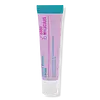What's inside
What's inside
 Key Ingredients
Key Ingredients

 Benefits
Benefits

 Concerns
Concerns

 Ingredients Side-by-side
Ingredients Side-by-side

Water
Skin ConditioningDimethicone
EmollientAluminum Starch Octenylsuccinate
AbsorbentDimethicone Crosspolymer
Emulsion StabilisingAmmonium Acryloyldimethyltaurate/Vp Copolymer
Trisiloxane
Skin ConditioningNylon-12
C12-15 Alkyl Benzoate
AntimicrobialAscorbyl Glucoside
AntioxidantGlycerin
HumectantMica
Cosmetic ColorantCaprylyl Glycol
EmollientTitanium Dioxide
Cosmetic ColorantPolyacrylamide
Xanthan Gum
EmulsifyingC13-14 Isoparaffin
EmollientSodium Hyaluronate
HumectantSodium Lactate
BufferingHydrolyzed Myrtus Communis Leaf Extract
Skin ProtectingSodium Hydroxide
BufferingBHT
AntioxidantDisodium EDTA
Polysorbate 20
EmulsifyingSodium PCA
HumectantLaureth-7
EmulsifyingRetinol
Skin ConditioningSorbitol
HumectantProline
Skin ConditioningHinokitiol
Parfum
MaskingWater, Dimethicone, Aluminum Starch Octenylsuccinate, Dimethicone Crosspolymer, Ammonium Acryloyldimethyltaurate/Vp Copolymer, Trisiloxane, Nylon-12, C12-15 Alkyl Benzoate, Ascorbyl Glucoside, Glycerin, Mica, Caprylyl Glycol, Titanium Dioxide, Polyacrylamide, Xanthan Gum, C13-14 Isoparaffin, Sodium Hyaluronate, Sodium Lactate, Hydrolyzed Myrtus Communis Leaf Extract, Sodium Hydroxide, BHT, Disodium EDTA, Polysorbate 20, Sodium PCA, Laureth-7, Retinol, Sorbitol, Proline, Hinokitiol, Parfum
Water
Skin ConditioningC13-16 Isoparaffin
SolventGlycerin
HumectantDiheptyl Succinate
EmollientHeptyl Undecylenate
Emollient1,2-Hexanediol
Skin ConditioningAmmonium Acryloyldimethyltaurate/Vp Copolymer
Polyglyceryl-10 Oleate
Skin ConditioningPropanediol
SolventVitis Vinifera
MaskingVitis Vinifera Seed Oil
EmollientCaprylic/Capric Triglyceride
MaskingBakuchiol
AntimicrobialTocopherol
AntioxidantAcmella Oleracea Extract
Skin ProtectingButylene Glycol
HumectantRetinol
Skin ConditioningAllantoin
Skin ConditioningHelianthus Annuus Seed Oil
EmollientCapryloyl Glycerin/Sebacic Acid Copolymer
Skin ConditioningEthylhexylglycerin
Skin ConditioningSalix Alba Bark Extract
AstringentCamellia Sinensis Leaf Extract
AntimicrobialLilium Candidum Bulb Extract
Skin ConditioningWater, C13-16 Isoparaffin, Glycerin, Diheptyl Succinate, Heptyl Undecylenate, 1,2-Hexanediol, Ammonium Acryloyldimethyltaurate/Vp Copolymer, Polyglyceryl-10 Oleate, Propanediol, Vitis Vinifera, Vitis Vinifera Seed Oil, Caprylic/Capric Triglyceride, Bakuchiol, Tocopherol, Acmella Oleracea Extract, Butylene Glycol, Retinol, Allantoin, Helianthus Annuus Seed Oil, Capryloyl Glycerin/Sebacic Acid Copolymer, Ethylhexylglycerin, Salix Alba Bark Extract, Camellia Sinensis Leaf Extract, Lilium Candidum Bulb Extract
 Reviews
Reviews

Ingredients Explained
These ingredients are found in both products.
Ingredients higher up in an ingredient list are typically present in a larger amount.
Ammonium Acryloyldimethyltaurate/Vp Copolymer (let's call it AAVC for short) is a synthetically created polymer. It's used as a film-forming agent and used to thicken the consistency of products.
AAVC is able to increase the consistency and viscosity of products due to its large molecule size. It also prevents ingredients from separating.
Glycerin is already naturally found in your skin. It helps moisturize and protect your skin.
A study from 2016 found glycerin to be more effective as a humectant than AHAs and hyaluronic acid.
As a humectant, it helps the skin stay hydrated by pulling moisture to your skin. The low molecular weight of glycerin allows it to pull moisture into the deeper layers of your skin.
Hydrated skin improves your skin barrier; Your skin barrier helps protect against irritants and bacteria.
Glycerin has also been found to have antimicrobial and antiviral properties. Due to these properties, glycerin is often used in wound and burn treatments.
In cosmetics, glycerin is usually derived from plants such as soybean or palm. However, it can also be sourced from animals, such as tallow or animal fat.
This ingredient is organic, colorless, odorless, and non-toxic.
Glycerin is the name for this ingredient in American English. British English uses Glycerol/Glycerine.
Learn more about GlycerinRetinol is a gold-standard ingredient for anti-aging. It is a form of Vitamin A and belongs to the class of retinoids that also includes tretinoin.
Why is retinol famous?
It has the most scientific studies backing up its skin benefits out of all the non-prescription ingredients.
Retinol is proven to:
This is why retinol is effective at removing wrinkles, fading dark spots, treating acne, and reducing the appearance of pores.
Studies show retinol is less effective when exposed to UV. Be sure to look for appropriate packaging to keep your retinol potent (similar to Vitamin C).
Using retinol or any retinoids will increase sun-sensitivity in the first few months. Though studies show retinoids increase your skin's natural SPF with continuous use, it is best to always wear sunscreen and sun-protection.
We recommend speaking with a medical professional about using this ingredient during pregnancy.
Retinol may cause irritation in some people, so be sure to patch test. Experts recommend 'ramping up' retinol use: start using this ingredient once a week and work up to using it daily.
Read about Tretinoin
Learn more about RetinolWater. It's the most common cosmetic ingredient of all. You'll usually see it at the top of ingredient lists, meaning that it makes up the largest part of the product.
So why is it so popular? Water most often acts as a solvent - this means that it helps dissolve other ingredients into the formulation.
You'll also recognize water as that liquid we all need to stay alive. If you see this, drink a glass of water. Stay hydrated!
Learn more about Water